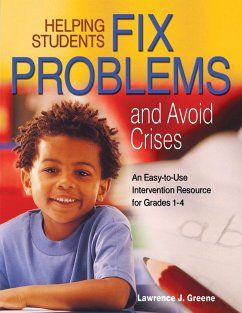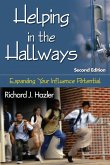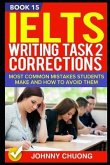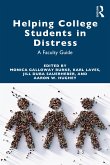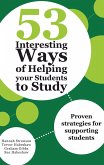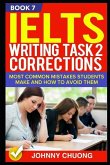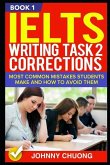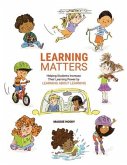Lawrence J. Greene
Helping Students Fix Problems and Avoid Crises
An Easy-to-Use Intervention Resource for Grades 1-4
Lawrence J. Greene
Helping Students Fix Problems and Avoid Crises
An Easy-to-Use Intervention Resource for Grades 1-4
- Broschiertes Buch
- Merkliste
- Auf die Merkliste
- Bewerten Bewerten
- Teilen
- Produkt teilen
- Produkterinnerung
- Produkterinnerung
For the child who doesn't have friends, does poorly in sports, or has difficulty learning, Greene provides solid, proven methods to help these learners succeed.
Andere Kunden interessierten sich auch für
![Helping in the Hallways Helping in the Hallways]() Richard J. HazlerHelping in the Hallways43,99 €
Richard J. HazlerHelping in the Hallways43,99 €![Ielts Writing Task 2 Corrections: Most Common Mistakes Students Make and How to Avoid Them (Book 15) Ielts Writing Task 2 Corrections: Most Common Mistakes Students Make and How to Avoid Them (Book 15)]() Johnny ChuongIelts Writing Task 2 Corrections: Most Common Mistakes Students Make and How to Avoid Them (Book 15)9,99 €
Johnny ChuongIelts Writing Task 2 Corrections: Most Common Mistakes Students Make and How to Avoid Them (Book 15)9,99 €![Helping College Students in Distress Helping College Students in Distress]() Helping College Students in Distress53,99 €
Helping College Students in Distress53,99 €![53 Interesting Ways of Helping Your Students to Study 53 Interesting Ways of Helping Your Students to Study]() Hannah Strawson53 Interesting Ways of Helping Your Students to Study30,99 €
Hannah Strawson53 Interesting Ways of Helping Your Students to Study30,99 €![Ielts Writing Task 2 Corrections: Most Common Mistakes Students Make and How to Avoid Them (Book 7) Ielts Writing Task 2 Corrections: Most Common Mistakes Students Make and How to Avoid Them (Book 7)]() Johnny ChuongIelts Writing Task 2 Corrections: Most Common Mistakes Students Make and How to Avoid Them (Book 7)9,99 €
Johnny ChuongIelts Writing Task 2 Corrections: Most Common Mistakes Students Make and How to Avoid Them (Book 7)9,99 €![Ielts Writing Task 2 Corrections: Most Common Mistakes Students Make and How to Avoid Them (Book 1) Ielts Writing Task 2 Corrections: Most Common Mistakes Students Make and How to Avoid Them (Book 1)]() Johnny ChuongIelts Writing Task 2 Corrections: Most Common Mistakes Students Make and How to Avoid Them (Book 1)9,99 €
Johnny ChuongIelts Writing Task 2 Corrections: Most Common Mistakes Students Make and How to Avoid Them (Book 1)9,99 €![Learning Matters Learning Matters]() Maggie HoodyLearning Matters16,99 €
Maggie HoodyLearning Matters16,99 €-
-
-
For the child who doesn't have friends, does poorly in sports, or has difficulty learning, Greene provides solid, proven methods to help these learners succeed.
Hinweis: Dieser Artikel kann nur an eine deutsche Lieferadresse ausgeliefert werden.
Hinweis: Dieser Artikel kann nur an eine deutsche Lieferadresse ausgeliefert werden.
Produktdetails
- Produktdetails
- Verlag: Corwin
- Seitenzahl: 200
- Erscheinungstermin: 27. April 2005
- Englisch
- Abmessung: 280mm x 216mm x 11mm
- Gewicht: 518g
- ISBN-13: 9781412904704
- ISBN-10: 1412904706
- Artikelnr.: 22094918
- Herstellerkennzeichnung
- Libri GmbH
- Europaallee 1
- 36244 Bad Hersfeld
- gpsr@libri.de
- Verlag: Corwin
- Seitenzahl: 200
- Erscheinungstermin: 27. April 2005
- Englisch
- Abmessung: 280mm x 216mm x 11mm
- Gewicht: 518g
- ISBN-13: 9781412904704
- ISBN-10: 1412904706
- Artikelnr.: 22094918
- Herstellerkennzeichnung
- Libri GmbH
- Europaallee 1
- 36244 Bad Hersfeld
- gpsr@libri.de
Lawrence J. Greene, a graduate of the Stanford University Graduate School of Education, is a nationally recognized author, educational therapist, consultant, and curriculum developer who has worked with more than ten thousand struggling students during a clinical career spanning thirty years. He has written eighteen books, and he has trained thousands of teachers in graduate programs at the university level. His educational curricula are currently used in elementary schools, middle schools, high schools, colleges, and universities throughout the world, and his books have been translated into languages ranging from Chinese to Spanish. Other Books by Lawrence J. Greene Kids Who Hate School Kids Who Underachieve Learning Disabilities and Your Child Getting Smarter Think Smart, Study Smart Smarter Kids Teachers' Desk Reference Guide to Learning Problems Improving Your Child's Schoolwork The Life-Smart Kid Finding Help When Your Child Is Struggling in School Roadblocks to Learning Winning the Study Game Study Wise Study Max: Improving Study Skills in Grades 9-12 The Resistant Learner Strategies for Success (forthcoming)
Introduction Being Attuned Can I Really Do It? How the Program Works Acknowledgments About the Author Unit 1: The Child Who Doesn
t Have Friends For Educators: Examining the Dynamics and Implications of Social Rejection Struggling With Seemingly Insoluble Problems The Nuts and Bolts of Self-Esteem Identifying and Expressing Feelings Concept and Application Developing Analytical Thinking Skills Key Objectives for Enhancing Students
Awareness Can Children Be Taught to Be More Empathetic? Examining the Story The Questions That Follow the Story Cause-and-Effect Principles Brainstorming Getting Started For Students: The Child Who Doesn
t Have Friends The Story Oral Questions Optional Activity: Careful Reading and Analysis of the Story Supplemental Reproducible Exercises Follow-Up and Application Additional Concrete Reinforcements Unit 2: The Child Who Has Difficulty Learning For Educators: Examining the Emotional Implications of Learning Problems The Effects of Learning Differences Conduct Commonly Associated With Learning Problems Classroom Scripts Restrictive Assessment Criteria Identifying and Applying Multiple Intelligences Learning Preferences Identifying Preferred Learning Modalities Learning Modality Inventory Interpreting the Survey Using Dominant and Preferred Learning Modalities Examining the Story The Questions That Follow the Story For Students: The Child Who Has Difficulty Learning The Story Oral Questions Optional Activity: Careful Reading and Analysis of the Story Supplemental Reproducible Exercises Follow-Up and Application Concrete Reinforcements Unit 3: The Child Who Steals For Educators: Examining the Dynamics and Implications of Stealing Common Explanations for Stealing An Alternative to the Traditional Adult Responses to Stealing Examining the Story The Questions That Follow the Story For Students: The Child Who Steals The Story Oral Questions Optional Activity: Careful Reading and Analysis of the Story Supplemental Reproducible Exercises Follow-Up and Application Concrete Reinforcements Unit 4: The Child Who Tells Lies For Educators: Examining the Dynamics and Implications of Lying Training Children to Be Truthful Expanding the List of Explanations for Lying Traditional Adult Responses to Lying The Role of the Teacher Examining the Story The Questions That Follow the Story For Students: The Child Who Tells Lies The Story Oral Questions Optional Activity: Careful Reading and Analysis of the Story Supplemental Reproducible Exercises Follow-Up and Application Concrete Reinforcements Unit 5: The Child Who Is a Bully For Educators: Examining the Dynamics and Implications of Bullying Power as a Surrogate Social Acceptance Training Children to Be Kind The Role of the Teacher Examining the Story The Questions That Follow the Story For Students: The Child Who Is a Bully The Story Oral Questions Optional Activity: Careful Reading and Analysis of the Story Supplemental Reproducible Exercises Follow-Up and Application Concrete Reinforcements Unit 6: The Child Who Does Poorly in Sports For Educators: Examining the Implications of Being Poorly Coordinated The Ethos of Sports The Consequences of Poor Coordination Antidotes for Athletic Insufficiencies Examining the Story The Questions That Follow the Story For Students: The Child Who Does Poorly in Sports The Story Oral Questions Optional Activity: Careful Reading and Analysis of the Story Supplemental Reproducible Exercises Follow-up and Application Concrete Reinforcements Appendix 1: Psychological Overlay and Learning Differences Understanding Psychological Overlay Identifying the Symptoms of Psychological Overlay Behaviors and Attitudes That May Indicate Psychological Overlay Appendix 2: Psychological Problems Red Flag Symptoms of a Possible Psychological Problem Referral and Intervention Index
t Have Friends For Educators: Examining the Dynamics and Implications of Social Rejection Struggling With Seemingly Insoluble Problems The Nuts and Bolts of Self-Esteem Identifying and Expressing Feelings Concept and Application Developing Analytical Thinking Skills Key Objectives for Enhancing Students
Awareness Can Children Be Taught to Be More Empathetic? Examining the Story The Questions That Follow the Story Cause-and-Effect Principles Brainstorming Getting Started For Students: The Child Who Doesn
t Have Friends The Story Oral Questions Optional Activity: Careful Reading and Analysis of the Story Supplemental Reproducible Exercises Follow-Up and Application Additional Concrete Reinforcements Unit 2: The Child Who Has Difficulty Learning For Educators: Examining the Emotional Implications of Learning Problems The Effects of Learning Differences Conduct Commonly Associated With Learning Problems Classroom Scripts Restrictive Assessment Criteria Identifying and Applying Multiple Intelligences Learning Preferences Identifying Preferred Learning Modalities Learning Modality Inventory Interpreting the Survey Using Dominant and Preferred Learning Modalities Examining the Story The Questions That Follow the Story For Students: The Child Who Has Difficulty Learning The Story Oral Questions Optional Activity: Careful Reading and Analysis of the Story Supplemental Reproducible Exercises Follow-Up and Application Concrete Reinforcements Unit 3: The Child Who Steals For Educators: Examining the Dynamics and Implications of Stealing Common Explanations for Stealing An Alternative to the Traditional Adult Responses to Stealing Examining the Story The Questions That Follow the Story For Students: The Child Who Steals The Story Oral Questions Optional Activity: Careful Reading and Analysis of the Story Supplemental Reproducible Exercises Follow-Up and Application Concrete Reinforcements Unit 4: The Child Who Tells Lies For Educators: Examining the Dynamics and Implications of Lying Training Children to Be Truthful Expanding the List of Explanations for Lying Traditional Adult Responses to Lying The Role of the Teacher Examining the Story The Questions That Follow the Story For Students: The Child Who Tells Lies The Story Oral Questions Optional Activity: Careful Reading and Analysis of the Story Supplemental Reproducible Exercises Follow-Up and Application Concrete Reinforcements Unit 5: The Child Who Is a Bully For Educators: Examining the Dynamics and Implications of Bullying Power as a Surrogate Social Acceptance Training Children to Be Kind The Role of the Teacher Examining the Story The Questions That Follow the Story For Students: The Child Who Is a Bully The Story Oral Questions Optional Activity: Careful Reading and Analysis of the Story Supplemental Reproducible Exercises Follow-Up and Application Concrete Reinforcements Unit 6: The Child Who Does Poorly in Sports For Educators: Examining the Implications of Being Poorly Coordinated The Ethos of Sports The Consequences of Poor Coordination Antidotes for Athletic Insufficiencies Examining the Story The Questions That Follow the Story For Students: The Child Who Does Poorly in Sports The Story Oral Questions Optional Activity: Careful Reading and Analysis of the Story Supplemental Reproducible Exercises Follow-up and Application Concrete Reinforcements Appendix 1: Psychological Overlay and Learning Differences Understanding Psychological Overlay Identifying the Symptoms of Psychological Overlay Behaviors and Attitudes That May Indicate Psychological Overlay Appendix 2: Psychological Problems Red Flag Symptoms of a Possible Psychological Problem Referral and Intervention Index
Introduction Being Attuned Can I Really Do It? How the Program Works Acknowledgments About the Author Unit 1: The Child Who Doesn
t Have Friends For Educators: Examining the Dynamics and Implications of Social Rejection Struggling With Seemingly Insoluble Problems The Nuts and Bolts of Self-Esteem Identifying and Expressing Feelings Concept and Application Developing Analytical Thinking Skills Key Objectives for Enhancing Students
Awareness Can Children Be Taught to Be More Empathetic? Examining the Story The Questions That Follow the Story Cause-and-Effect Principles Brainstorming Getting Started For Students: The Child Who Doesn
t Have Friends The Story Oral Questions Optional Activity: Careful Reading and Analysis of the Story Supplemental Reproducible Exercises Follow-Up and Application Additional Concrete Reinforcements Unit 2: The Child Who Has Difficulty Learning For Educators: Examining the Emotional Implications of Learning Problems The Effects of Learning Differences Conduct Commonly Associated With Learning Problems Classroom Scripts Restrictive Assessment Criteria Identifying and Applying Multiple Intelligences Learning Preferences Identifying Preferred Learning Modalities Learning Modality Inventory Interpreting the Survey Using Dominant and Preferred Learning Modalities Examining the Story The Questions That Follow the Story For Students: The Child Who Has Difficulty Learning The Story Oral Questions Optional Activity: Careful Reading and Analysis of the Story Supplemental Reproducible Exercises Follow-Up and Application Concrete Reinforcements Unit 3: The Child Who Steals For Educators: Examining the Dynamics and Implications of Stealing Common Explanations for Stealing An Alternative to the Traditional Adult Responses to Stealing Examining the Story The Questions That Follow the Story For Students: The Child Who Steals The Story Oral Questions Optional Activity: Careful Reading and Analysis of the Story Supplemental Reproducible Exercises Follow-Up and Application Concrete Reinforcements Unit 4: The Child Who Tells Lies For Educators: Examining the Dynamics and Implications of Lying Training Children to Be Truthful Expanding the List of Explanations for Lying Traditional Adult Responses to Lying The Role of the Teacher Examining the Story The Questions That Follow the Story For Students: The Child Who Tells Lies The Story Oral Questions Optional Activity: Careful Reading and Analysis of the Story Supplemental Reproducible Exercises Follow-Up and Application Concrete Reinforcements Unit 5: The Child Who Is a Bully For Educators: Examining the Dynamics and Implications of Bullying Power as a Surrogate Social Acceptance Training Children to Be Kind The Role of the Teacher Examining the Story The Questions That Follow the Story For Students: The Child Who Is a Bully The Story Oral Questions Optional Activity: Careful Reading and Analysis of the Story Supplemental Reproducible Exercises Follow-Up and Application Concrete Reinforcements Unit 6: The Child Who Does Poorly in Sports For Educators: Examining the Implications of Being Poorly Coordinated The Ethos of Sports The Consequences of Poor Coordination Antidotes for Athletic Insufficiencies Examining the Story The Questions That Follow the Story For Students: The Child Who Does Poorly in Sports The Story Oral Questions Optional Activity: Careful Reading and Analysis of the Story Supplemental Reproducible Exercises Follow-up and Application Concrete Reinforcements Appendix 1: Psychological Overlay and Learning Differences Understanding Psychological Overlay Identifying the Symptoms of Psychological Overlay Behaviors and Attitudes That May Indicate Psychological Overlay Appendix 2: Psychological Problems Red Flag Symptoms of a Possible Psychological Problem Referral and Intervention Index
t Have Friends For Educators: Examining the Dynamics and Implications of Social Rejection Struggling With Seemingly Insoluble Problems The Nuts and Bolts of Self-Esteem Identifying and Expressing Feelings Concept and Application Developing Analytical Thinking Skills Key Objectives for Enhancing Students
Awareness Can Children Be Taught to Be More Empathetic? Examining the Story The Questions That Follow the Story Cause-and-Effect Principles Brainstorming Getting Started For Students: The Child Who Doesn
t Have Friends The Story Oral Questions Optional Activity: Careful Reading and Analysis of the Story Supplemental Reproducible Exercises Follow-Up and Application Additional Concrete Reinforcements Unit 2: The Child Who Has Difficulty Learning For Educators: Examining the Emotional Implications of Learning Problems The Effects of Learning Differences Conduct Commonly Associated With Learning Problems Classroom Scripts Restrictive Assessment Criteria Identifying and Applying Multiple Intelligences Learning Preferences Identifying Preferred Learning Modalities Learning Modality Inventory Interpreting the Survey Using Dominant and Preferred Learning Modalities Examining the Story The Questions That Follow the Story For Students: The Child Who Has Difficulty Learning The Story Oral Questions Optional Activity: Careful Reading and Analysis of the Story Supplemental Reproducible Exercises Follow-Up and Application Concrete Reinforcements Unit 3: The Child Who Steals For Educators: Examining the Dynamics and Implications of Stealing Common Explanations for Stealing An Alternative to the Traditional Adult Responses to Stealing Examining the Story The Questions That Follow the Story For Students: The Child Who Steals The Story Oral Questions Optional Activity: Careful Reading and Analysis of the Story Supplemental Reproducible Exercises Follow-Up and Application Concrete Reinforcements Unit 4: The Child Who Tells Lies For Educators: Examining the Dynamics and Implications of Lying Training Children to Be Truthful Expanding the List of Explanations for Lying Traditional Adult Responses to Lying The Role of the Teacher Examining the Story The Questions That Follow the Story For Students: The Child Who Tells Lies The Story Oral Questions Optional Activity: Careful Reading and Analysis of the Story Supplemental Reproducible Exercises Follow-Up and Application Concrete Reinforcements Unit 5: The Child Who Is a Bully For Educators: Examining the Dynamics and Implications of Bullying Power as a Surrogate Social Acceptance Training Children to Be Kind The Role of the Teacher Examining the Story The Questions That Follow the Story For Students: The Child Who Is a Bully The Story Oral Questions Optional Activity: Careful Reading and Analysis of the Story Supplemental Reproducible Exercises Follow-Up and Application Concrete Reinforcements Unit 6: The Child Who Does Poorly in Sports For Educators: Examining the Implications of Being Poorly Coordinated The Ethos of Sports The Consequences of Poor Coordination Antidotes for Athletic Insufficiencies Examining the Story The Questions That Follow the Story For Students: The Child Who Does Poorly in Sports The Story Oral Questions Optional Activity: Careful Reading and Analysis of the Story Supplemental Reproducible Exercises Follow-up and Application Concrete Reinforcements Appendix 1: Psychological Overlay and Learning Differences Understanding Psychological Overlay Identifying the Symptoms of Psychological Overlay Behaviors and Attitudes That May Indicate Psychological Overlay Appendix 2: Psychological Problems Red Flag Symptoms of a Possible Psychological Problem Referral and Intervention Index

